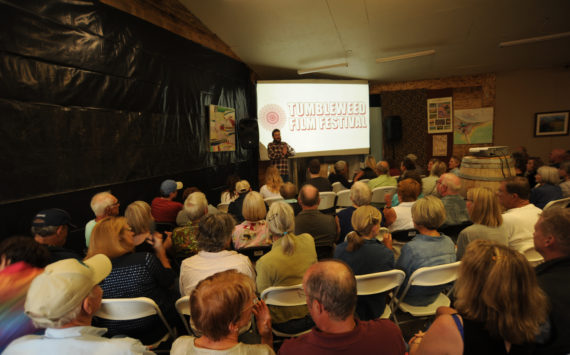
Money doesn’t grow on trees. But sometimes, it comes pretty close.
The question is – do we let them grow, or cut them down?
Since voters passed Initiative 502 over three years ago, Washington has been at the forefront of a growing national trend to legalize recreational marijuana usage. And the front of that wave is rich with development opportunities, unexplored territory, and lucrative economic potential.
The Okanogan Valley, thanks to both our climate and economy, is uniquely poised to capitalize on that potential.
Before legalization, most cannabis agriculture was hidden away inside – for obvious reasons. As medicinal and recreational legalization spreads, many farms continue to operate indoors. Although indoor grows can generate successful yields, the requirements to provide enough light and resources are massive. High-wattage lights keep plants happy, but send electricity bills skyrocketing. And in a world increasingly burdened by the effects of climate change, the carbon emissions generated by indoor-grown marijuana are shocking to say the least.
According to a study in the Journal of Energy Policy, one pound of indoor-grown marijuana generates about 3,000 pounds of carbon emissions. To put that into perspective, you could drive an average sedan from Oroville to Los Angeles, then cross-country to New York, and you’d still create fewer emissions than that one pound of indoor-grown pot.
Hence the enthusiasm for outdoor marijuana farms, freed from the need to hide. But outdoor farms need lots of sun to keep their plants thriving with high yields. And in Washington, a state notorious for its rain-drenched cities, where’s an enterprising marijuana farmer to find enough sunshine?
Welcome to the Okanogan Valley, home of the oft-touted 300 days of sunshine per year. Add to that our region’s low real-estate prices, and you’ve got quite the combination for potential growers.
And Washington’s agri-entrepreneurs have noticed.
From July 2014 through July 2015, 75 recreational marijuana licenses were issued in Okanogan County – 42 for production, 30 for processing and three for retail. From these numbers alone, you can see that marijuana grown here is mostly being sold elsewhere. During that period, Okanogan County received about eight percent of statewide production licenses, but less than two percent of retail licenses. Among all Washington counties, Okanogan County was issued the fourth-highest number of licenses, and the second-highest number of production licenses (behind only Spokane County).
So what effect is the industry having on communities?
Tax revenue, for one. In the first year of operation (July 2014 to July 2015), the Washington cannabis industry brought over $75 million to the state. Those dollars are shared with cities and counties that allow the marijuana industry to operate within their jurisdiction.
Beyond tax revenue, marijuana agriculture brings jobs. In addition to jobs associated with any agriculture business, marijuana creates employment space for trimmers, security, seed harvesters and more. Creating value-added products – edibles, concentrates, and the like – increases employment to include chemists, chefs, packagers and more.
As with any new business, large portions of expenditures go into the local economy. Building materials, construction labor and farm supplies can all be sourced locally, further stimulating the local economy.
And because revenue is coming mostly from sales to retail stores outside of the county, all these expenditures and wages are bringing outside dollars into the local economy, enriching the community as a whole.
Still, marijuana farms do have their detractions. Some neighboring residents dislike the plants’ smell, which sometimes drifts over fences. And with any new industrial or agriculture business in town, construction can be seen as an eyesore, lighting can be bothersome, and other changes can strike nerves.
Earlier this month, spurred by resident complaints, the Okanogan County commissioners set in place a six-month moratorium on marijuana farms, preventing any new farms from being built in unincorporated areas of the county.
The infant industry of recreational marijuana is in its most formative years. Okanogan County, blessed with a grow-friendly climate and inexpensive real estate, finds itself in a fortuitous position, poised to benefit heartily. But winds can shift quickly, and the region could easily be left behind. The recent moratorium may prove to be a temporary pause, or a sign of changing winds. Only time, and the active participation of county residents, will tell.





Comments are closed.